An interview with Ursula von Rydingsvard

View of “Ursula von Rydingsvard: The Contour of Feeling.“ The Fabric Workshop and Museum, Philadelphia. 2018. Photo: Carlos Avendaño.
Nature and artifice: an old distinction, and an unhelpful one. In the wooden sculptures of Ursula von Rydingsvard, painstakingly crafted and often monumental in scale, organic materials pass through industrial processes — only to reemerge as an artwork with its own, uncanny kind of life. Each work begins from standardized, interchangeable blocks of cedar, arranged into rectilinear stacks. But out of those familiar minimalist building blocks emerge grand, imposing sculptures whose scuffed surfaces and cavernous voids are larded with personal history, deep pathos, and rare generosity.
Von Rydingsvard was born in 1942, to a Polish family in Nazi Germany, and after the war she spent years in camps for displaced persons before coming to the United States. By 1973 she was living in New York, and she now works in a massive, sawdust-flecked studio in Bushwick, equipped with all manner of blades, sanders, vices, and glues, plus a forest’s worth of cedar specially milled for her in Vancouver. (There are also two forklifts; the second of them was a birthday gift from her husband, the Nobel-winning neuroscientist Paul Greengard.) On the morning I arrive von Rydingsvard is at work on a new sculpture, an undulating barbican with a yawning cavity at its heart. I join her as she places a fresh cedar plank on the tower, instinctually draws a few contour lines, and hands it to an assistant with a circular saw. It comes back with its corners shorn off, and slots in like magic. × Jason Farago
Although you were born to a Polish family, you didn’t actually set foot in Poland until much later in life. What do you remember about your earliest years, when you lived in a series of camps in Germany?
There was this flavor: something that ran through the air and told you that something unspeakable had happened. I was born in 1942. My father, who was actually Ukrainian but spoke Polish, was a forced laborer for the Germans. Because there were very few men left, very few Germans, they conscripted men from the Slavic countries, especially farmers, to enable those who were not fighting the war to have food.
One of the first memories that I have is sitting on the front steps of the small dwelling in which we lived. I must have been around two years old, and I recall having on something that I believe to be a linen nightgown, and the linen was very stiff, very tough, and it was geometric, and I somehow remember looking at it because the sun was shining on its surface. In another camp that followed, I also remember having that same linen, and trying to soften it. It was woven in a very rough, very rugged way. I would lay this linen down on the weeds — there was no grass in the camps; there were really no roads, no cement, no pavement — and it would rise up and down, it would breathe. I would sprinkle it with water to make it softer, and I would do this daily so the sun would shine on it.
The other memory I have dates from the end of the war. I saw the sky lit up with all of these amazing colors. I looked up, and I really didn’t understand what was going on, but I knew that it was something that was dangerous. My father dug a ditch into the land, and he lay the young children in there, and he put wooden boards over us. They wouldn’t do any good; the whole thing wouldn’t do any good, what he did. But this was the only thing he could do, all he could think of to protect us. I remember having these wooden boards so close to my face. I knew I had to keep still, I couldn’t move the boards, I couldn’t peek outside.
When the war ended in 1945, we went through another eight camps for displaced Polish people. Polish was my first language.
Was there ever a thought, after the war, that your parents would want to go to the new Polish People’s Republic?
No. They had no desire to go to a Communist country. We always wanted to go to the United States. My parents could hardly read and write, but they were extremely able in the area of survival. They were able to make little farms of sorts, wherever they went. They got rabbits and had them multiply.
My mother was the one that was able to love the family. You knew the family meant a tremendous amount to her. With my father, he was a man that was much, much more difficult. He had streaks of violent outbursts, but the only way he could care for you was not with his behavior towards you, but by providing you shelter, by providing you food. Doing whatever he needed to do to have his kids survive.
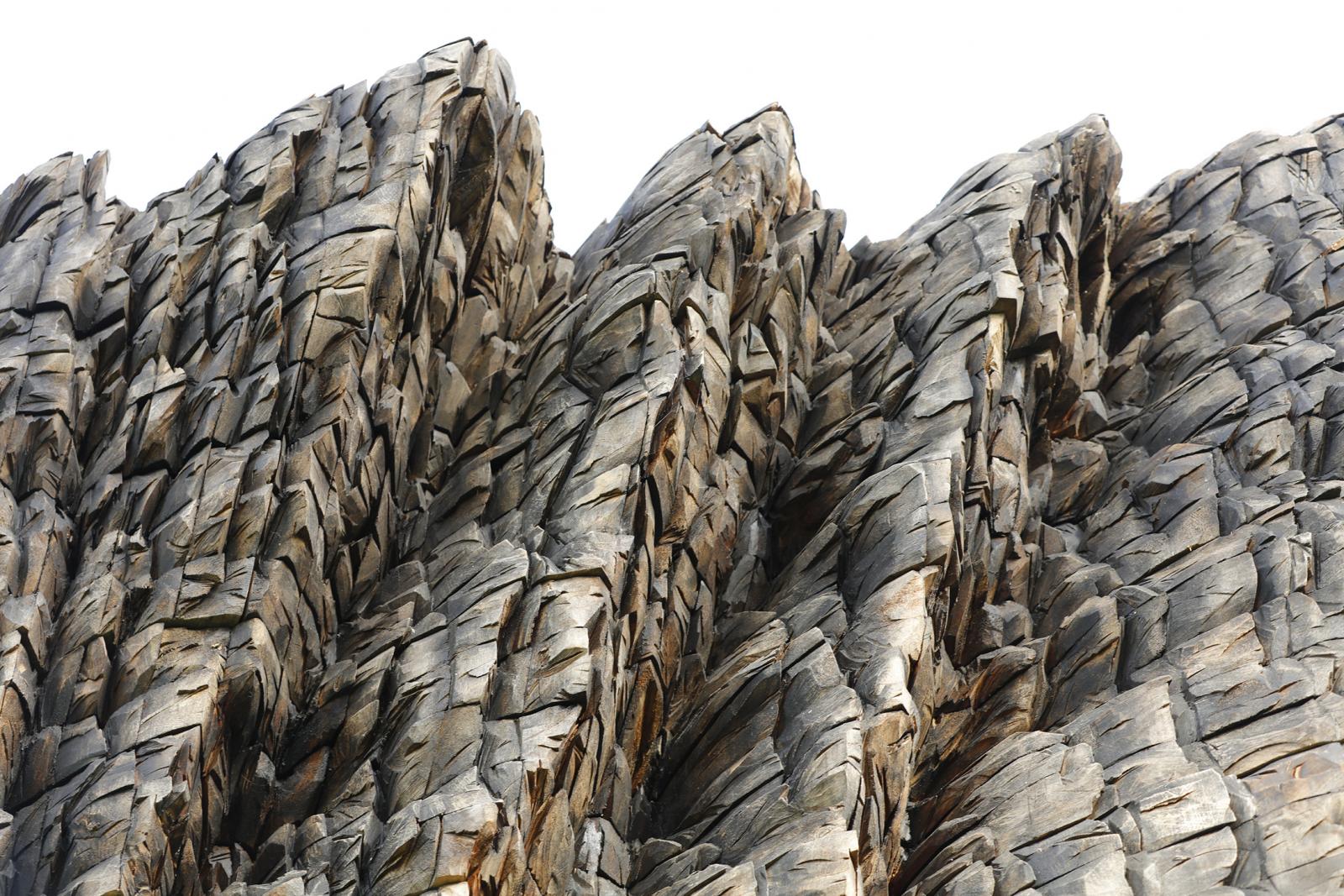
What did your parents do when they came to the United States?
My father worked in a factory in New Britain, Connecticut, which had a huge contingent of Polish people. He had jobs that give me pain to think about. A man who was an extraordinary farmer, who used a horse-drawn plow in order to till the soil, was put in a machine, where they cuff you and chain you, so that your hands rise up when the die cuts whatever it needs to cut on the bottom. The smell. And no safety, except for your hands.
He did that for a long time. They took advantage of him because he couldn’t speak English. I think he learned maybe 50 words, and two of them were cock sucker. In America, he thought he was the lowest being on the ladder.
Most of the materials you use — not only wood, but also graphite, linen, even cows’ stomachs in some works — retain a certain humility even after you’ve worked them for months or years. Subsistence is a theme.
I have this feeling that I have this strong link to a past that I never experienced, the peasant farmer past. Not that I want to experience it; I never asked for it. But it sort of runs through my blood, whether I want it or not. I’m obsessed with shovels. What the hell is with the shovels? But they’re like icons to me. They are humble icons, and I’m partial to things that have a sense of humility.
You got familiar with the world of the camps, whether you wanted to or not. All the farms had wood stacks everywhere. And my father continued to chop wood in the United States, even when he developed Alzheimer’s. It was a thing of real consequence to him. It wasn’t even conscious; it was just necessary for him.
When you were a student and a young artist in New York in the 1970s, the predominant media for sculpture were metal and more industrial materials. I wonder what your experience was like at Columbia [in 1973–1975]. Was there a resistance to sculptors’ use of wood?
The only studio they had was a steel studio. There was no woodworking. So I welded. Steel was just the most frustrating thing imaginable. I couldn’t get it to feel organic; I couldn’t get it to have a credible, soulful look to it. The only thing that I think was partially successful was a sheet of cold-rolled steel that I pinned with C-clamps on all four sides, and then welded with a rod. You melt the rod, so it would drip a small droplet, like a bead, and it would fuse with the body of the steel plate. And I would do this over and over and over again. It was like a prayer. The heat made the sheet organic in a beautiful, delicate way. That I liked. That’s the only thing I did that was successful there.
Was Sol LeWitt there?
Sol was a good friend of mine. He was not a teacher. He was a terrible teacher; he was just a great human being. The teachers were awful. All men, and they all met one another in Deer Isle in Maine, so they all hired one another. It was not a very good department. There were two very kind guys there, but nobody that you would know.
But Columbia gave me breathing options. All the shows that I saw, all the friends that I had: at last I wasn’t considered weird, because I came from Plainville, Connecticut, a blue-collar town where there was no such thing as an artist. I used to sit on the benches of Columbia University, with my cheeks throbbing, because Max Kozloff did a series of lectures on Duchamp, and I thought to myself, “For anybody to think about Duchamp for that long, that thoroughly….” And then I had Meyer Schapiro — I died for him. Real artists would come and listen to him, practicing artists. He loved them.
All of us born after 1980 can be very susceptible to mythologizing New York in the 1970s. The bankrupt city where everyone was free…
I was on 125th Street, because I don’t think Columbia wanted anything to do with people in studios, who made noise and polluted the air. They had this gorgeous campus, but the only thing we could do there was go to classes. In some ways you’re glad to be away from that, because academia rings so strong and so loud. So, 125th Street — but it was dangerous. We had stones thrown at us.
I was near Claremont Avenue, totally poverty-stricken. I was on food stamps, I was trying to scrape by on $2,000 or $3,000 for the year, and most of it was taken by Columbia for the apartment. If I took the subway, I had to really think about it. I never bought newspapers. But I did taste a terrific amount of freedom. I just divorced a husband — the best thing that came of that was my daughter — and when he was no longer a part of my life, I could do things for myself.
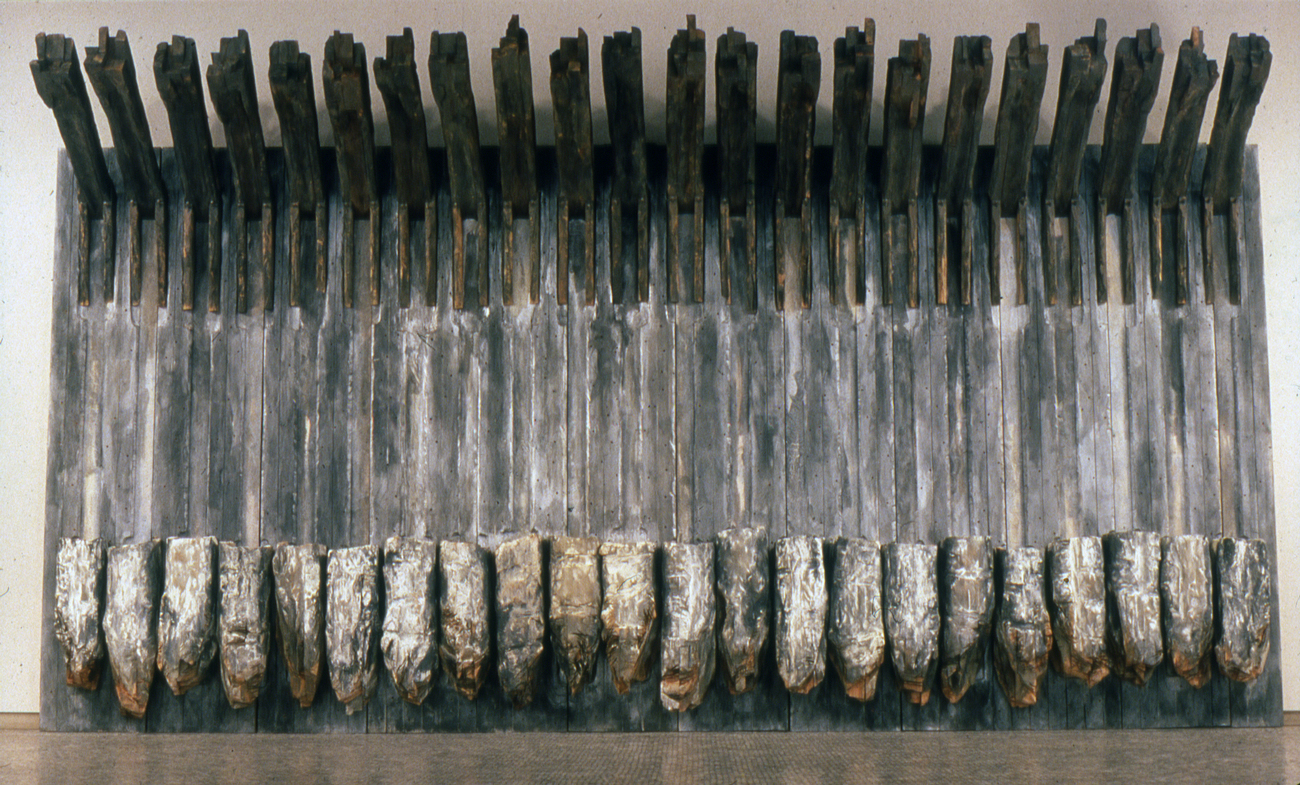
Cedar enters into the work around this time, at the end of your time at Columbia. It’s a surprising material in some ways: less seductive than mahogany or other hardwoods. Cedar is more modest. It’s used in homebuilding, but it has industrial and commercial purposes as well. Can you tell me about how cedar became your principal material?
There’s a painter, Michael Mulhern, a very close friend of mine. He helped me rebuild a loft that I moved into as soon as I finished Columbia. There was a sale on cedar, and Michael brought a whole bunch of 4x4s to me. I took them to the metalworking studio, and I just got so much dust on everything — I was overjoyed. It was so easy to cut into! And the forms you could get: straight, straight, straight; you could get a curve! It was like a whole other world, and I could get these forms that felt like the earth, or felt fleshy.
And yet you were always working with commercial planks of wood, not felled trees. You get to curves and earthiness by starting with something rectilinear. The grid — the ultimate trope of modernist painting and sculpture — is always underlying these poetic, fluid, organic forms, and grids are usually visible on the surfaces of the finished works.
I tried the tree-trunk thing, and it was awful! First of all, you can never forget that it’s a tree trunk; and second of all, the tree trunk implies what it might want. I would go nuts; the branches wouldn’t work for me. These are neutral. They don’t ask anything of you. They’re like a blank piece of paper.
How, then, do you transubstantiate the planks into something more alive? How do the parts cohere?
I start by drawing with chalk on the floor. Then we place a single 4x4, and I take it and draw on all four of its sides. The cutter understands my markings; my assistants are extraordinarily good in assessing what I need to get from the work. Once that 4x4 has been cut, I put in on the floor and put the next plank alongside it. There’s a relationship, always, between the partners, between the neighbors. So I draw on the sides of the next 4x4, reacting to the first one. It’s a one-by-one process. And every fraction of an inch is considered, because that’s what the line does. By the end of that process, you’ll have one level. So, it’s a whole process that is very iffy, but we keep it going, and it becomes less iffy as it grows up, as it becomes bigger, and as I have more information to work with and a bigger body to work with. They are made in layers, like donuts.
The format of the planks means that there’s an order in the way things gets assembled, from the bottom to the top. We still think about sculpture, particularly wooden sculpture, as something chiseled away from a single form. Yours is additive, assembled from the bottom to the top. Do you know, when you’re on the lower stacks, what the upper stacks are going to look like?
I usually have some sort of an image, because you have to have somewhere to start, some sort of an image. Often it doesn’t work. It’s a constant groping, a constant feeling your way, a constant state of doubt, and sometimes, because you have to repeat things, it’s boring. You have to discipline your way through that boredom to get the drama you need later on. But the cedar is like butter. It yields so easily; it doesn’t fight you. It’s sensuous, and it’s almost pink when you first get it, so it’s sexy, and then it turns a light brown.
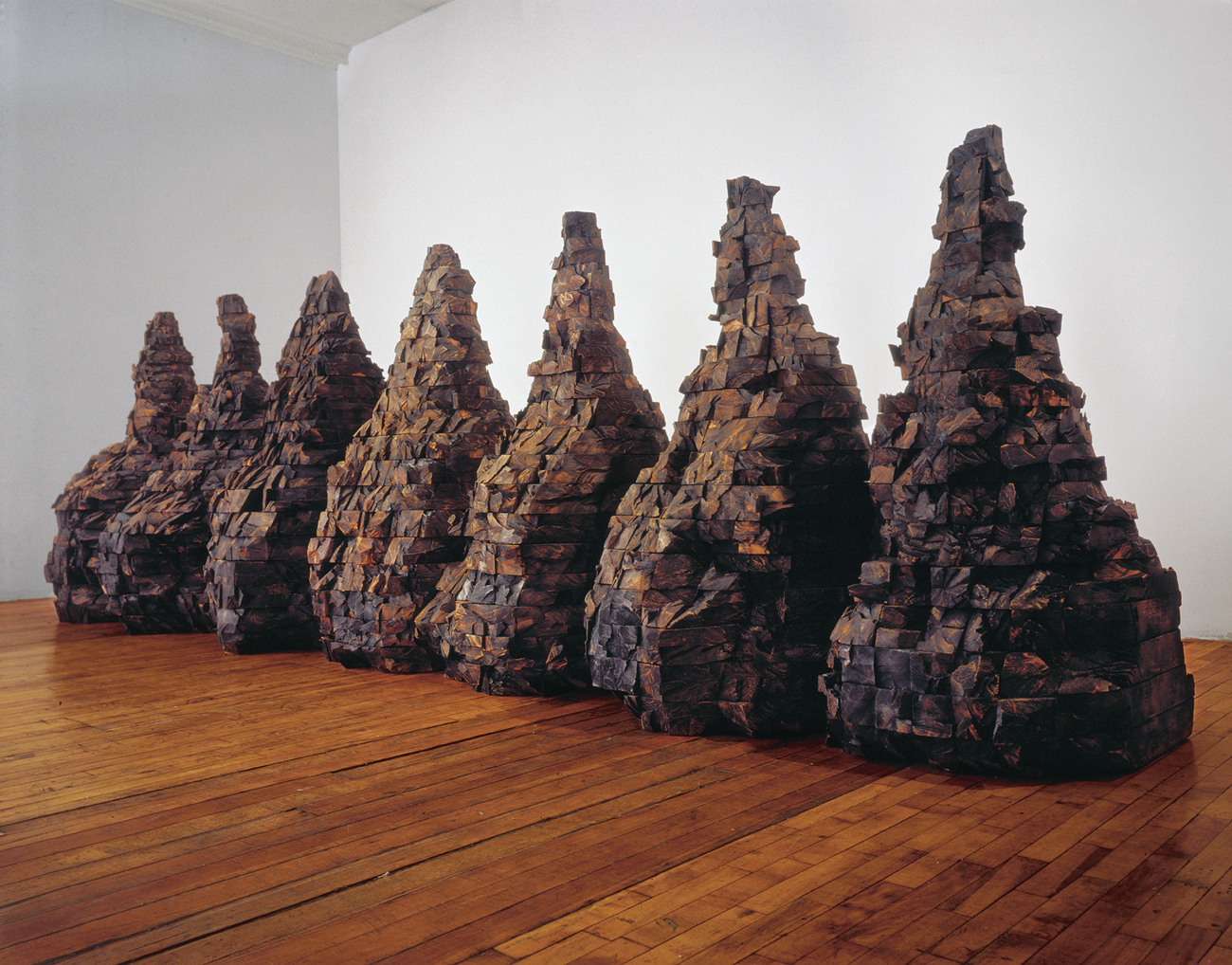
Is there a moment when it passes from being a bunch of planks to being one thing you then can move around, chisel at a little bit? Do you ever have this moment when you see it solidify or cohere?
Even after it’s screwed together, if it’s really finished, if I’m through with it, I get a pretty good sense of what it is. The problem is that my ceiling is only 16 feet high, and when I build it I need at least 24 inches, so I can only go 14 feet high. So for the larger works I have to take the bottom out, and then I get lost! I have to be aware of all of the 4x4s I put in — that’s where I’m most confident about my next move, and often I don’t see the piece put together as a whole. With the Barclays Center piece [Ona, 2013, a 12,000-pound bronze work that stands outside a Brooklyn stadium] I never saw that put together as a whole, since it’s too tall. I see it for the first time after they cast it.
It’ s funny that you analogize the planks of cedar to pieces of paper, considering all the drawing that goes on in these works. First, the marks to be cut, which are residual on the piece; then the rubbing with graphite, which is another, different kind of drawing, an all-over kind. Drawing simultaneously wants to tell you how the sculpture got made, and at the same time obscures that process.
I don’t think that way, but you’re exactly right. I don’t go out of my way to hide or reveal the process; it’s just that the process is extremely influential in my thinking about where the piece needs to go. That informs me. And I think the graphite really helps to amplify some of the emotional things that I want to say. People think that I love wood, that I’m crazy about wood. I’m not. I deform it terribly, not just with what I do with a circular saw, but with the graphite as well. I’m always trying to get away from the cedar. The cedar invades my life! It’s actually making me ill; I have to wear an air-pumped suit when I’m working now.
We should talk about bronze — as well as copper, the material used for the new work at Princeton. There’s a disconcerting conversion that goes on in the casting process: these massive, solid assemblages of wood are transformed into something hollow.
The copper is almost as thick as the Statue of Liberty’s. And it was just hell to work with. For three years we pounded copper, and I ended up lighting it with a torch to get those whitish reds, brownish reds, orange-ish reds. Whereas the bronze is only a quarter of an inch thick. All bronze is is surface. Even figures don’t have a soul. The bronze will last much longer than the wood — there’s no comparison. Two thousand years for bronze, whereas with wood, you can get 80 or 90 years, and only if it’s maintained.
But doesn’t your choice of wood entail a limited existence for these artworks? They have to deteriorate, whether you want them to or not.
You’re right, of course. But it really hurts to see pieces that I consider important not being maintained. I don’t want my work to rot. Even after I’m gone.
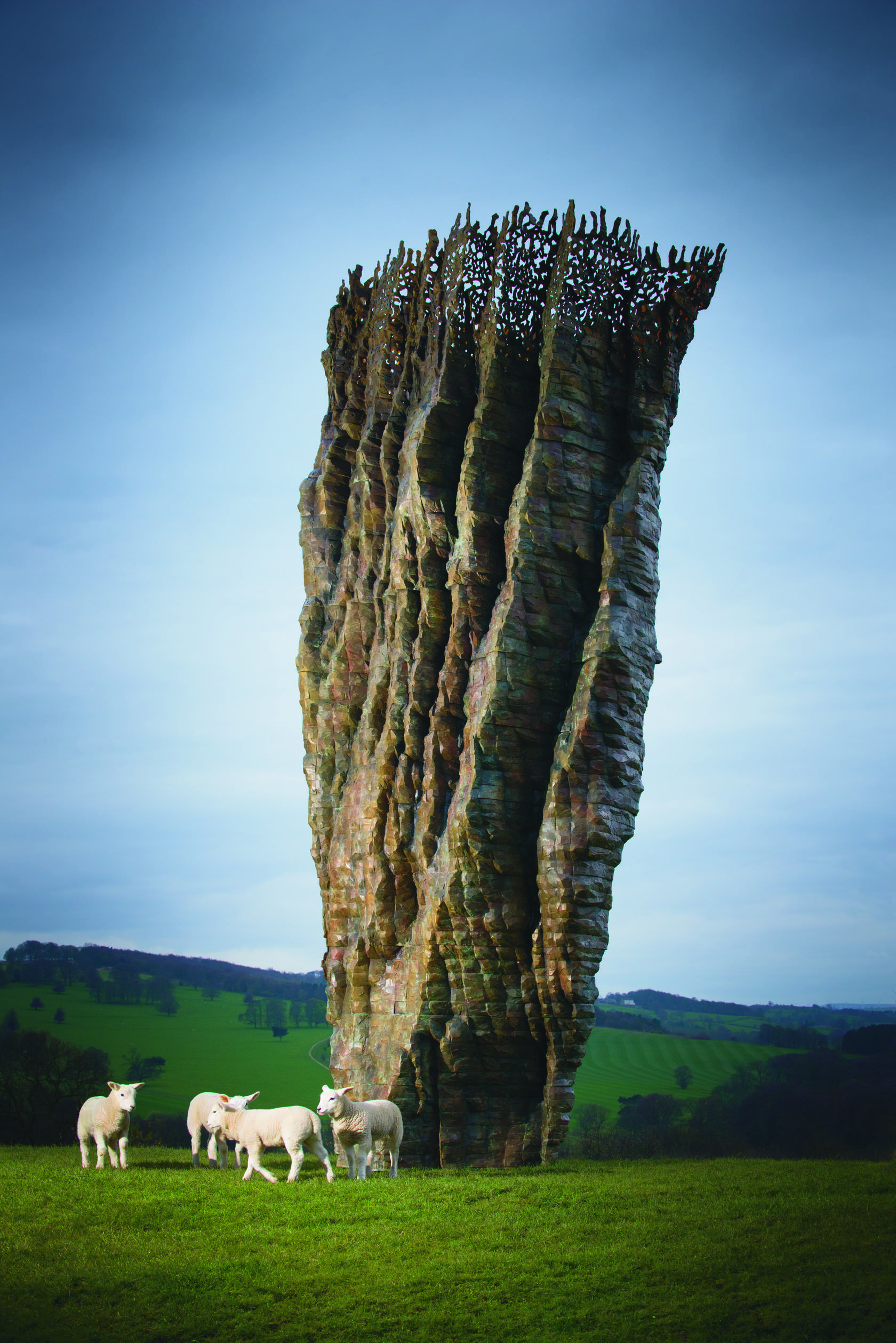
West Bretton, United Kingdom.
Do the cedar works chip, where you’ve made narrow incisions?
I think they do, but the bigger problem comes from snow and rain. It starts to get soft, and it has to be sprayed with a wood preservative. Museums are extremely good at maintaining my work, whereas private collectors sometimes are not. No matter how much written guidance you give them as to how to maintain it. You train their gardeners, then the gardeners change. You’re always the last thing on their agenda….
That leads into a conversation about public art, and how your works are perceived differently in public space. Even though it’s very clear that these sculptures are not functional, a lot of them — such as Ona outside the Barclays Center — have architectural qualities. Can enfold you, even.
People were getting married underneath the resin sculpture I installed in Madison Square Park [Damski Czepek, 2006]. I need size in order to envelop you and the body, in order to obtain a certain psychological power. With Ona, I was there for the inauguration, and one of the guards from the Barclays Center came up to me. She says, “Are you Ursula? I want to tell you something. I’ve never seen people make out as much in front of anything as they do in front of your piece.”
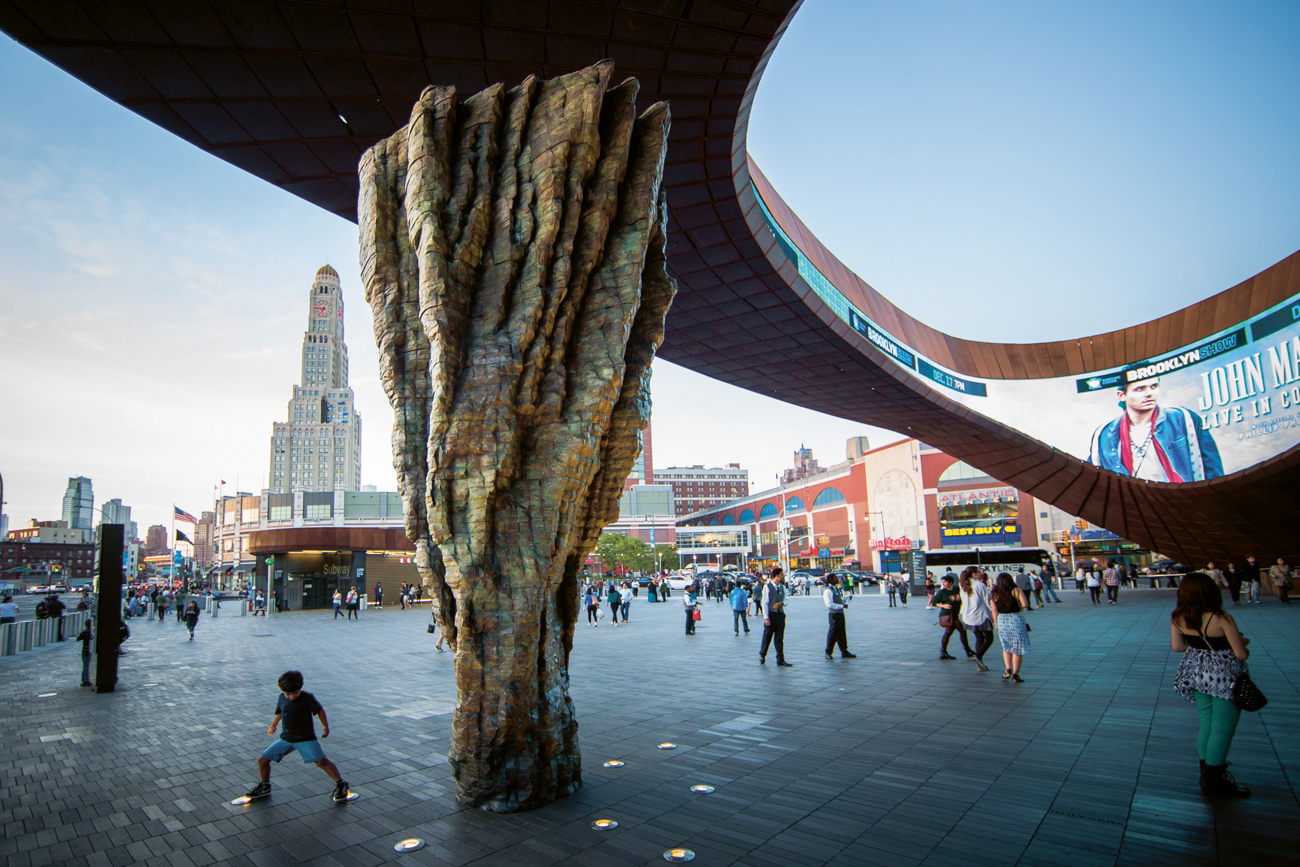
How long have you been working in Brooklyn?
Since 1981. I was in Williamsburg. I moved to this studio ten years ago.
Well, even ten years ago, the idea of a Barclays Center — of a massive stadium smack on Atlantic Avenue — would have still been unimaginable. But you’ve watched first Manhattan gentrify, then Williamsburg, and now here in Bushwick artists are being priced out…
My time as a young artist was so innocent, in 1975, compared to what’s going on now. The studio spaces are so much more expensive. We didn’t have computers — well, we had one, but nobody used it. For me, it was all about studio, studio, studio.
In the late 70s I participated in something called CETA [Comprehensive Employment and Training Act, a city program that hired more than 600 artists between 1977 and 1980]. You had to make less than $4,500 a year to participate, and it was hoping to be like the WPA during the Depression, but it wasn’t like that. It was so lame. They had no funding. They sent me to the Bronx. I remember getting off of the subway, and at that time the Bronx just had these shells of enormous brick buildings, where the windows were eaten out. No doors. Nobody was living there. There were a lot of homeless people around burning barrels. Huge mountains of bricks. It felt like World War II.
I finally find this place where I’m supposed to go to, and there’s this 21-year-old that I saw on a linoleum floor, and he was straightening out rusted nails. I asked to speak to the director, and it was him. It was like a joke. He says, “Oh, come, I’ll show you what you can use as materials. You can use this pile of bricks, and then there’s another pile of tires.” That was my only job for a whole year, and I got paid $10,000 for doing nothing, basically! But it enabled me to work on my art for a whole year. Anything to bide time.
That’s what I worry about most for artists today, the inability to bide time. The question of money is only part of it. The real luxury is time, and the freedom to get things wrong.
That’s what I’m so lucky with. It took me a lifetime to get this, but I’m so fortunate, because I have the conditions under which I can create. If it’s fucked up, it’s my fault.